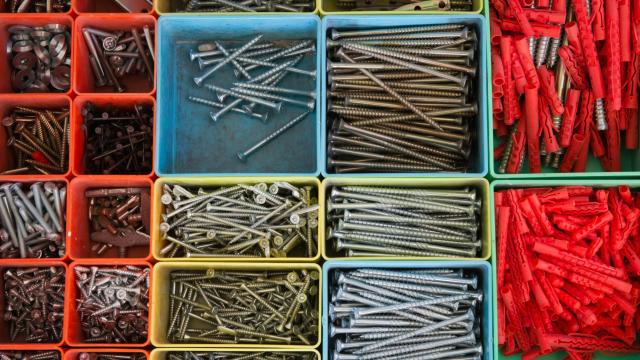If you’re tackling even a small DIY project around the house, navigating the fastener aisle at the hardware store can be daunting. There are hundreds of different types of screws, nails, bolts, and staples on offer, and it can be tricky to know exactly which one you need to finish the job. But choosing the right type isn’t as difficult as you might think. Here are a few tips to make your next hardware store trip more successful.
Consider the material type
Part of the decision-making process when choosing a fastener involves the type of material you’re working with. For instance, attaching something to drywall will require fasteners designed for that type of wall board. If you’re working with wood, then wood screws, nails, or staples meant for fastening wood are the right choice. For metal, there are sheet metal screws and bolts, as well as “self-tapping” versions for making a quick attachment. These different kinds of fasteners are almost always grouped together in the fastener aisle, and then usually separated by length, rating, and thread count. Search out the right area for you material (or ask for help finding it) and you can eliminate a ton of potential confusion right away.
Choosing the right screw head
Different screws have different types of drive heads. The most common are philipp’s head and flat head, but there are also torx or star drive screws, as well as allen key varieties. Depending on the length of the screw you’re trying to drive and the material you’re driving it into, a torx or star tip is a great choice for beginners — because of the shape, it’s harder to strip the screw with your driver tip, and it’s easier to fit a driver bit into the head of the screw and keep it securely seated while you’re screwing it in, especially if you need to apply lots of pressure.
For softer materials like drywall, a philipp’s head works just as well. If you’re working with sheet metal, the appropriate screws are almost always philipp’s or flathead, and because you will commonly be drilling a hole first, any type of drive tip that fits your other needs will work well. One hint: If you plan to assemble and disassemble your parts more than once, using a uniform type of head for all the screws involved will greatly accelerate this process.
Choosing the right nail
You might think a nail is a nail, but there are many types of nails. The main consideration when choosing one is the density of the wood you’re driving them into, the thickness of the board, and the overall purpose of the project. For smaller and denser materials like hardwood moulding, finish nails are the right choice; these are narrower and have less of a chance of splitting your board. For larger, less dense applications like a two by four frame, a framing nail is ideal, as it will be strong enough to hold your pieces together, yet, because the material is a bit more supple, it still shouldn’t be your board. You can also get nails that are meant specifically for plaster and wallboard that are good for hanging pictures or other decor. All nail types typically come in both conventional hammer and pneumatic nail gun varieties.
Should you use staples?
Staples are usually used for thinner material, although larger sizes can be used for fastening to any surface that won’t be visible once your project is done. They can make a slightly stronger joint than a finish nail, so you can use them for smaller types of framing. They are harder to make flush and to patch and sand smooth, so they’re no good for moulding or finer surfaces. There are a few different crown widths of staples to choose from, so make sure to check which type of pneumatic stapler you have before buying staples.
Make sure you buy for the right environment
The biggest difference in the material that a fastener is made out of will be whether it is meant for indoor or outdoor use. Exterior varieties will often say “polymer coated” or “hot dipped” on the label — this just means they have been manufactured with some extra protection against the elements. Interior hardware doesn’t really need the extra coating because it (hopefully) won’t get wet on a regular basis. Make sure to check the label of your fastener to ensure you’re getting something that will work for your project.

Leave a Reply
You must be logged in to post a comment.